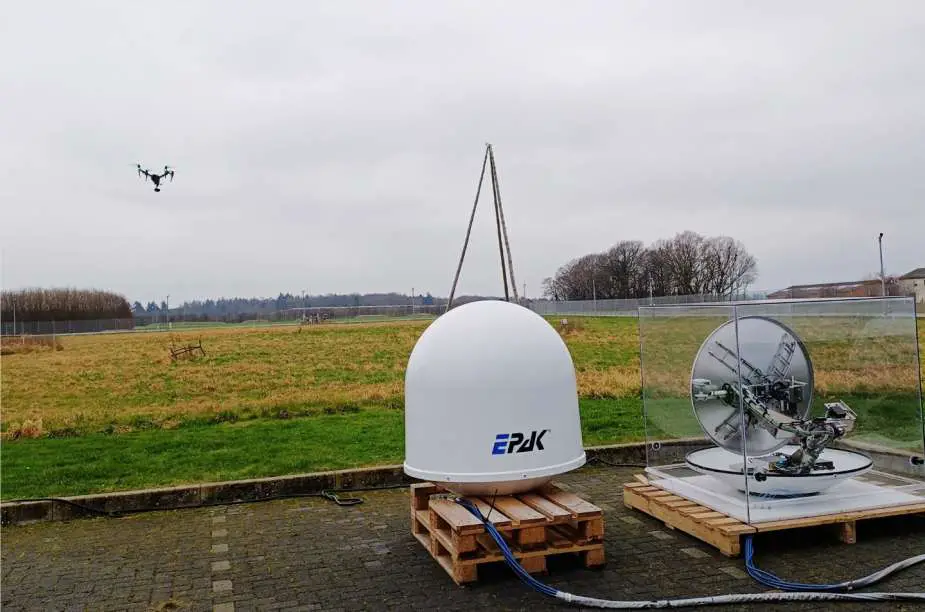Breaking news
Germany to develop Sabbia 2.0 passive radar using Starlink signals.
On January 15, 2024, as mentioned in the latest annual report from Germany's Ministry of Defence on defense technology, Germany recently conducted a test of a new passive radar system known as Sabbia 2.0. This system utilizes signals from the Starlink satellite constellation for tracking and imaging targets. According to the report, Sabbia 2.0 could represent a novel approach to surveillance technology.
Follow Army Recognition on Google News at this link

The Sabbia 2.0 system records a drone signature during the testing phase. (Picture source: FHR)
The Sabbia 2.0 passive radar system demonstrator has been developed by the Fraunhofer Institute for High-Frequency Physics and Radar Techniques (FHR) and relies on the signals emitted by over 3,000 Starlink satellites orbiting at an altitude of 550 kilometers.
Experiments have been undertaken to evaluate the performance of Starlink signals in the 10.7-12.7 GHz frequency band, confirming their suitability for passive radar applications. The design of this system allows for potential expansion with additional reference and monitoring channels, indicating the possibility of future developments.
The Sabbia 2.0 demonstrator has demonstrated effectiveness in tasks such as target detection, classification, and remote sensing. This suggests potential applications in various fields, including surveillance, remote sensing, and disaster monitoring. The architecture of this passive radar system does not require specific frequency allocations and leverages the existing satellite infrastructure. It is noted that Starlink's signals are characterized by high bandwidth and strong reception power, which can contribute to improved ground resolution and signal-to-noise ratios, thereby enhancing radar detection capabilities.
The German system employs the Starlink network's signals in a practical manner, which is noted for potential operational advantages. These include reduced susceptibility to jamming and enhanced detection capabilities for stealth targets. The operational process involves using a high-gain reference antenna to receive signals from a selected Starlink satellite, in combination with a surveillance antenna that detects echoes from targets within a specified observation area. This allows for target detection without the emission of radar signals, thereby reducing the system's detectability by potential adversaries.
The presence of a significant number of satellites within the Starlink constellation ensures that the radar system can illuminate targets from multiple angles, thereby enhancing detection capabilities under various operational scenarios. Furthermore, the design of the system facilitates its deployment on moving platforms, such as ships, providing operational flexibility without compromising its discreet nature.
Future developments in this technology may include the integration of Starlink signals with those from geostationary television satellites, potentially leading to a prototype capable of continuous radar imaging. Such enhancements could support remote sensing and surveillance activities, expanding the scope of the technology beyond traditional radar applications.
The field of passive radar technology is evolving, partly driven by the availability and characteristics of satellite constellations like Starlink, which provide global internet services and a platform for radar applications. The reduction in the cost of rocket launches has facilitated the deployment of broadband communication satellites in low Earth orbits. The Starlink constellation, known for its extensive network, offers continuous global coverage, which is instrumental for passive radar applications.



















